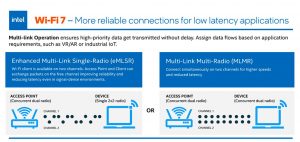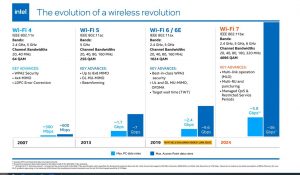The Wonders of Wi-Fi 7: Wireless Connectivity in an Operational Technology Environment
Key Security Enhancements
Wi-Fi 7 (also known as 802.11be) is the next generation of Wi-Fi technology that promises to deliver faster speeds, lower latency, and better performance in congested areas. Some of the key security enhancements in Wi-Fi 7 include:
- Enhanced encryption: Wi-Fi 7 uses advanced encryption algorithms to secure data transmissions and protect against cyber threats.
- Improved authentication: Wi-Fi 7 includes enhanced authentication protocols that make it more difficult for unauthorized devices to access the network.
- Advanced threat protection: Wi-Fi 7 includes advanced security features to detect and prevent malicious activities on the network, such as malicious software or unauthorized access attempts.
- Secure device management: Wi-Fi 7 provides tools for secure device management and control, allowing network administrators to manage and secure devices on the network.
- Robust network security: Wi-Fi 7 includes features to secure the network against external attacks, such as firewalls, intrusion detection systems, and network security protocols.

Source: “Wi-Fi 7: The Next Era in Wireless” by Intel
Benefits
Wi-Fi 7 also provides several other benefits in an operational technology (OT) environment, including:
- Increased bandwidth: Wi-Fi 7 supports higher bandwidths, which can improve the speed and efficiency of data transfer between OT devices, leading to improved performance and reduced latency.
- Improved reliability: Wi-Fi 7 includes advanced technologies such as multi-user multiple-input multiple-output (MU-MIMO) and target wake time (TWT), which can improve network reliability and reduce the impact of interference on the connection.
- Increased capacity: Wi-Fi 7 supports more simultaneous connections, allowing more devices to be connected to the network at once, increasing the overall capacity of the network.
Read George’s previous Tech Tips on 5 Best Practices for Securing Industrial Control Systems.
Challenges
While Wi-Fi offers many benefits in an OT environment, there are also several challenges to consider, including:
- Security: Wi-Fi networks are vulnerable to cyber-attacks, which can compromise the confidentiality, integrity, and availability of critical OT data and systems.
- Interference: Wi-Fi operates in an unlicensed spectrum, which means it can be subject to interference from other devices operating in the same frequency band.
- Latency: Wi-Fi networks can introduce latency in the communication between OT devices, which can be an issue for real-time control and monitoring applications.
- Reliability: Wi-Fi networks can be affected by environmental factors such as distance, obstructions, and radio frequency (RF) interference, which can result in unreliable connections.
- Compatibility: Wi-Fi is based on industry standards, but not all OT devices may support the same standards, making it difficult to integrate them into a Wi-Fi network.
- Complexity: Wi-Fi networks can be complex to set up, configure, and manage, especially in large or industrial environments with many devices and sensors.

Source: “Wi-Fi 7: The Next Era in Wireless” by Intel
Organizations must carefully consider these challenges when deploying Wi-Fi in an OT environment and design the network with security, reliability, and compatibility in mind to ensure the success of their deployment.
Overall, Wi-Fi 7 provides a more robust, efficient, and secure networking solution for OT environments, allowing organizations to better collect, process, and utilize real-time data from their operations.
